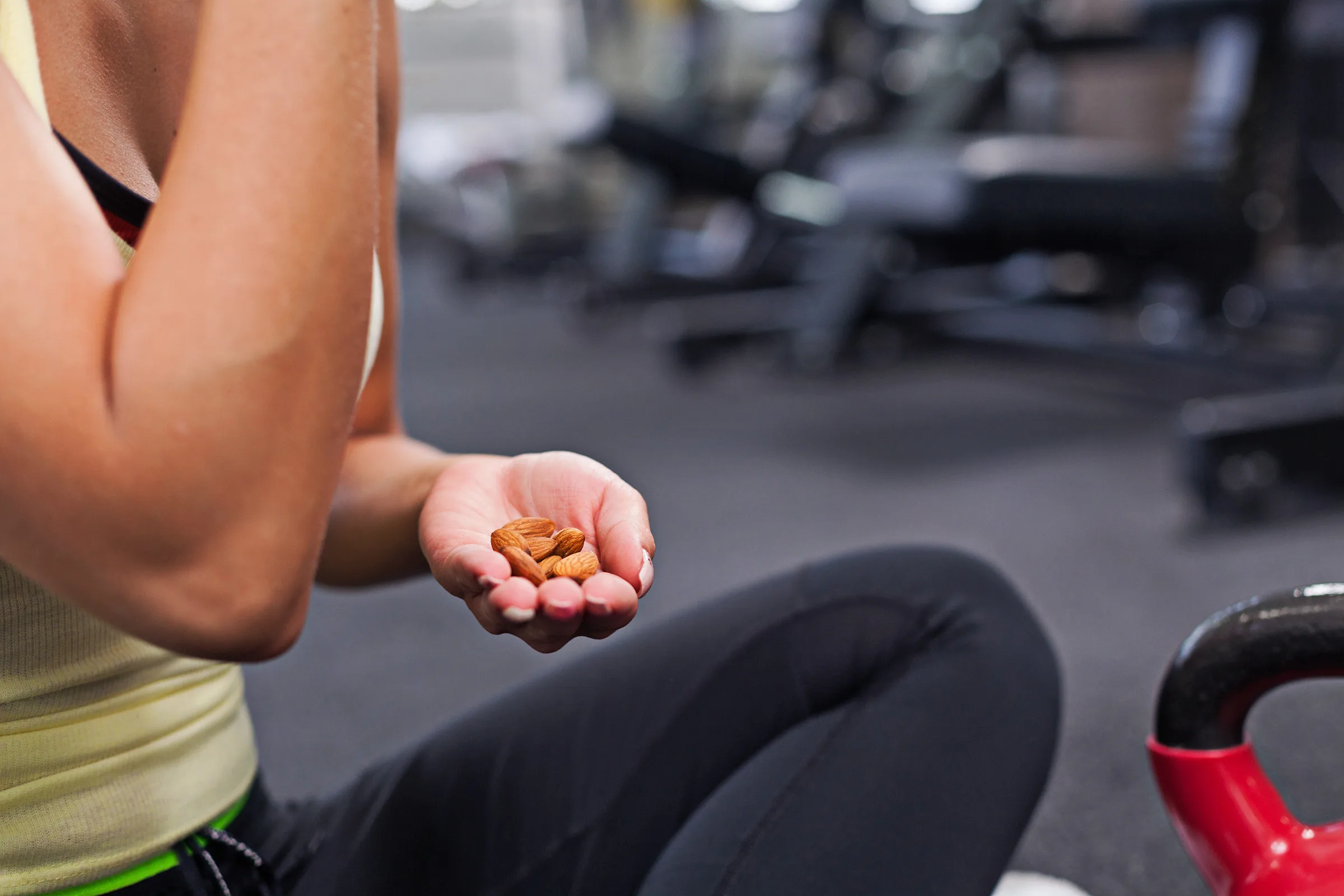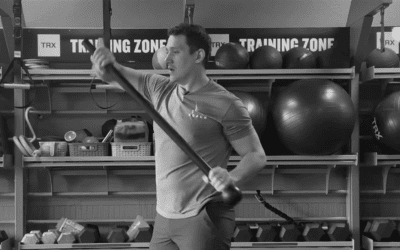An Honest Look at Intermittent Fasting

Intermittent Fasting (IF) is the practice of restricting your food intake by reducing your eating hours or modifying your meal schedule. As with most diet-related practices, there’s a lot of misinformation out there on intermittent fasting. If you’re interested in testing the IF waters, where do you start?
Cole Hergott is the head S&C coach at Trinity Western University in Langley, BC. With a master’s in coaching science and his CSCS, he’s got the passion for fitness, nutrition, and sports. In this blog, he outlines the different methods of intermittent fasting and his experiences.

Change the Way You Train
What is Intermittent Fasting?
“Don’t eat after 7pm.”
“Fasting helps with weight loss.”
“Being hungry teaches discipline.”
These ideas have been pervasive in the nutrition industry and in gym culture for a long time. They’re some of the simple slogans that accompany the concept of intermittent fasting.
Intermittent fasting, or IF, is a form of restrictive eating in which you modify the number of hours you consume calories, often in an attempt to lose weight. One of the main themes is shortening the amount of time you allow yourself to eat.
Different IF Methods
- Time-restricted eating; 16:8 — fast for 16 hours, eat for 8
- Day-restricted eating; 5:2 — eating normally for 5 days, with a severe restriction for 2 days of the week
- Alternate-day fast — fast every second day
- OMAD — Only consuming one meal a day
- Eat-Stop-Eat — no calories for one or two 24-hour periods each week
If you want to hear a no-BS, honest assessment from a coach who has done multiple forms of IF, then you’re in the right place. While my opinions are backed by science and I may refer to it, the purpose of this article is to give you an honest first-person take on IF from a coach.
I’m the head strength & conditioning coach at a Canadian university. I coach over 350 athletes and counsel them on their nutritional habits. I’m a certified nutrition coach through Precision Nutrition as well as being a certified strength coach and sport scientist. (Plus, I have a Master’s degree). Along with these credentials, I myself have done three different protocols of IF on three different occasions, and that has given me a lot of insight into the topic.
First, a quick rundown of some pros and cons.
Pros of IF
- Fat loss
- Reducing inflammation
- Improving risk factors for Alzheimer’s, asthma, arthritis, Multiple sclerosis, and stroke
- Improving eating discipline
- Hormone rebalancing
Cons of IF
- Hunger
- Fatigue
- Headaches
- Nausea
- Insomnia
- Muscle loss
Why Are You Considering Fasting?
The first thing to think about when deciding to try IF is your why. There are a number of reasons one might decide to fast, but for simplicity’s sake, let’s assume that the main purpose of IF is to lose weight. Restricting the amount of time you have access to food or deliberately avoiding food altogether means living and training in a calorie deficit.
So right off the bat, if you’re someone who is looking to gain weight, I don’t recommend doing IF often. I have had athletes try to gain weight on it, but they were obviously not successful. In order to gain weight, you need to consume more calories than you burn. If you’re a busy athlete burning thousands of calories per day, it’s hard to eat enough in a shorter period of time (especially in one meal).
Most athletes I work with have a hard time eating enough to gain weight WITHOUT any restrictions. So, good luck with that while handcuffing yourself to IF.
But if you’re someone who’s looking to shed a few pounds, IF can be a great option for you. I have done the 16:8, One Meal a Day, and Eat-Stop-Eat (where I fasted for one 24 hour period each week).
Each time it was in an effort to lose weight, and each time I was successful. Was there a heavy cost at times? You bet. Let’s dive into those so you get a better idea of the real deal.
What Does It Take to Fast?
Dealing With Hunger
Hunger is a very powerful force for living creatures on this planet. Without the hunger signal telling us to fuel our bodies, we die. So, forcing yourself not to eat for a period of time when you’re used to eating definitely causes the tummy to rumble.
However, that generally only lasts a short period of time (1-2 weeks). Just as your body has adapted to eating three square meals with snacks each day, it can adapt to fasting as well, reducing your hunger signals as time goes on. So if you can stick that one out, it’s short lasting.
Social Life Struggles
Intermittent fasting can also put some strain on your social life. Depending on the type of protocol you choose, you may be hanging out with friends while they eat and you don’t.
When I was doing the Eat-Stop-Eat protocol, I would fast on Saturday. Weekends were when I would hang out with my girlfriend and our hangouts would often lead us to her house for a meal. Of course, her mother was a caterer. Imagine a new boyfriend telling his girlfriend’s mom, who just spent hours making a world-class meal, that he “can’t” eat anything because he’s doing intermittent fasting.
This could be as simple as not eating food at a restaurant, or trying to shift your dinner plans to earlier in the evening so you can eat, but still make your cut-off time. It’s doable, but it definitely takes some extra effort and will power. Weird looks from friends are unavoidable.
Avoiding Disordered Eating
Disordered eating is a pattern of eating that can negatively affect one’s mental, physical, or emotional wellbeing. A common form of disordered eating is binge eating. This can become a problem with fasting, especially if you’re trying the One Meal a Day (OMAD) protocol. The OMAD is basically a planned binge every day, which can lead to chronic binge eating behaviors if you’re not careful.
As someone who has tried OMAD, it can be very “fun” to make or buy a large amount of food and consume it in one sitting. Some people may hate the feeling of going all day starving only to stuff yourself later that day. Others might love the idea and spend their starved hours daydreaming about the amount of calories they can consume “guilt-free” that night after work.
Obviously this is an unsustainable method and a dangerous slope to go down. Don’t be afraid to consult a licensed professional before you dive headfirst into OMAD.
Staying on Schedule
Meal timing and scheduling is very important with intermittent fasting. One of the common protocols of time-restrictive eating is 16:8, where you go 16 hours without food and eat for an 8-hour block. This can be as simple as skipping breakfast, then eating your first meal at 11am and stopping eating after dinner at 7pm.
However, if you are someone who trains really early in the morning, going each day without eating can cause a less effective workout and lower your recovery by not eating until a few hours later. Or if you’re coaching/teaching like I do early in the morning until later in the evening, it can be tough to go a portion of that day without fuel and still perform at your best.
If you’re a student with no morning classes and the ability to sleep in, then this may be a winner. Or if you have weekends off with no major physical task to do, then doing the Eat-Stop-Eat as I did on Saturday may work for you (if you can avoid judgment from your future mother-in-law). Overall, make sure you take a look at your schedule and when you need fuel before you jump into any IF protocols.

Should Athletes Try Intermittent Fasting?
This last section is the one I deal with the most. As I work with athletes who constantly pepper me with questions about diets they see on social media, the topic of IF frequently comes up. I’ll tell you what I tell them.
I don’t recommend it.
Why?
- Athletes need large amounts of calories to fuel their bodies throughout a full day of training and daily life. By limiting the time you can eat, you’re limiting your recovery capacity.
- Many athletes are trying to gain weight, which can be almost impossible while doing IF.
- You’re busy! Between work, school, kids, hobbies and training, working in a fasting schedule is tough and can wreck your energy levels.
- Athletes often play games or compete on the weekends, so taking a full day away from eating (like in the Eat-Stop-Eat) can either inhibit your recovery after a game or your fueling before a game.
- Athletes need a constant source of fuel to help with their busy schedule and eating only once per day doesn’t accomplish that. Try training after you have been fasting for 20+ hours, or right after you just ate 4000 calories… yuck either way.
- Most athletes end up doing IF anyway by skipping breakfast before morning lifting, and often struggle to make it through while performing at their best.
Intermittent fasting might not work for a university or high school athlete, but it might work for you. Consider your training style and how high your calorie and schedule demands are.
I wouldn’t recommend IF to an athlete who didn’t need to do it for other health benefits as recommended by a medical professional.
But if you’re not competitive, but want to try IF “just to see” — start with the method that makes the most sense for your schedule and lifestyle.
At the end of the day, intermittent fasting works for fat loss because it restricts the amount of time you can consume food, leading to fewer calories consumed. However, if fat loss is your only goal, there are many other ways to accomplish that without doing IF. Creating a caloric deficit can be done numerous ways.
If the other health benefits of IF catch your eye and you want to try it, just be ready to be hungry…
Find Your Perfect Training Plan
Sometimes all you need to reach your destination on your fitness journey is an expert guide. We've got you covered. Browse from thousands of programs for any goal and every type of athlete.
Try any programming subscription free for 7 days!
Want Training Tips, Exercise Guides & Knowledge Bombs Sent to Your Inbox?
Sign up for the FitNerd newsletter from TrainHeroic
Related articles
3 Ways to Improve Mobility Without Stretching
Are you still trying the endless foam rolling and stretching exercises to get that deep squat position? We know how important mobility is for great, or even GOOD performance. All professional athletes have some comfortability in end ranges of motion. So, what else do...
The Ultimate Guide to Lunges: Queen of all Glute Exercises
Your glutes are the largest muscle group in your body. They’re responsible for almost everything your legs do—walking, running, jumping, squatting, lunging, and just standing upright. As far as moving through space goes, strong glutes are the bedrock of overall...
A Beginner’s Guide to Steel Mace Training
Author: Jesse Grund
Mace training will make you a better mover without it’s not confining you to a fixed space or predetermined range of motion. Second, it’s an offset load with 80 to 90 percent of the weight in the head. You’re also constantly having to resist rotation, which creates greater core engagement.

Join the community
Sign up for the latest training news and updates from TrainHeroic

About TrainHeroic
Made with love, sweat, protein isolate and hard work in Denver, CO
© 2023 TrainHeroic, Inc. All rights reserved.






